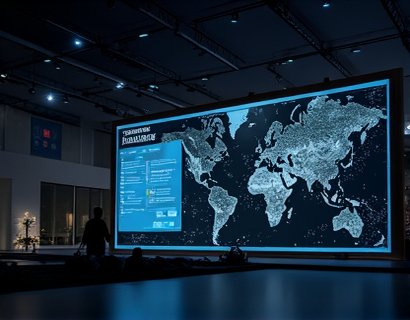Streamlining Web Development with Custom Placeholder Code Generators
In the fast-paced world of web development, efficiency and productivity are paramount. One innovative solution that has gained traction among developers, designers, and business owners is the custom placeholder code generator. This tool is designed to save time and enhance efficiency by providing customizable templates that can be used to generate placeholder website code. The primary goal is to create professional and visually appealing content without the hassle of manual coding, ensuring that the website design is both functional and attractive.
The concept of using placeholder code is not new, but the advancement in technology has made it more accessible and user-friendly. Traditionally, developers would spend a significant amount of time creating dummy content to test the layout and design of a website. This process, while necessary, could be time-consuming and repetitive. A custom placeholder code generator automates this process, allowing users to focus on the more critical aspects of web development.
Benefits of Using a Placeholder Code Generator
One of the most significant advantages of using a placeholder code generator is the time savings it offers. By automating the creation of dummy content, developers can quickly set up a basic structure for their projects. This means that the initial stages of web development can be completed much faster, allowing teams to move on to more complex tasks such as implementing features and integrating third-party services.
Another benefit is the consistency and professionalism that placeholder code generators provide. The templates generated by these tools are designed to mimic real content, ensuring that the layout and design look cohesive and polished. This is particularly useful for stakeholders who need to review the website's design before the actual content is populated. It helps in getting feedback early in the development process, leading to better final outcomes.
Customization Options
While placeholder code generators offer pre-designed templates, they also provide a high degree of customization. Users can adjust various parameters such as font styles, colors, and spacing to match their specific branding and design requirements. This flexibility ensures that the placeholder content aligns with the overall aesthetic vision of the project. For instance, a digital agency working on a client's website can use the generator to create a template that reflects the client's brand identity right from the start.
Moreover, many modern placeholder code generators allow for the inclusion of interactive elements. This means that the generated code can include functional buttons, forms, and navigation menus, giving a realistic preview of the final product. This feature is especially valuable for e-commerce businesses and tech startups that need to demonstrate the user interface and user experience (UI/UX) of their websites to investors or stakeholders.
Enhancing Developer Productivity
For web developers, the use of a placeholder code generator can significantly enhance productivity. Instead of writing boilerplate code for each new project, developers can leverage the generator to create a solid foundation quickly. This not only speeds up the development process but also reduces the likelihood of errors, as the generator ensures that the basic structure is correctly implemented.
Additionally, the generator can save developers from the repetitive task of creating placeholder content for multiple pages within a website. This is particularly beneficial for large projects with numerous interconnected pages. By generating placeholder code for all pages at once, developers can maintain consistency across the site and focus on more intricate coding tasks.
Designers and Visual Content Creation
Web designers benefit greatly from placeholder code generators as well. These tools provide a quick way to visualize the design mockups they create. Designers can export the generated code and use it as a starting point, ensuring that the design is accurately represented on the live site. This seamless transition from design to development helps in maintaining the integrity of the design vision.
Furthermore, the ability to preview the website with placeholder content allows designers to make real-time adjustments and see the immediate impact of their changes. This iterative process is crucial in the design phase, as it enables designers to refine their work based on feedback and practical considerations.
Use Cases Across Various Industries
The utility of placeholder code generators extends across various industries and types of businesses. For digital agencies, these tools are indispensable for quickly setting up project templates for clients. Agencies can use the generators to provide a consistent starting point for each project, saving time and ensuring a uniform workflow.
Tech startups, often working with limited resources, can leverage placeholder code generators to accelerate their product development. By focusing on core functionalities while using pre-generated placeholder content, startups can launch minimum viable products (MVPs) faster and gather user feedback more efficiently.
E-commerce businesses, which rely heavily on a visually appealing and user-friendly website, can use these generators to create a compelling product page layout. The generators can produce placeholder product listings, navigation menus, and call-to-action buttons, giving e-commerce sites a professional look from the outset.
Integration with Development Workflows
Integrating a placeholder code generator into existing development workflows can be seamless. Most generators offer APIs or plugins that can be easily incorporated into popular development environments such as Visual Studio Code or WebStorm. This integration allows developers to generate placeholder code with a few clicks or keyboard shortcuts, further streamlining the process.
Additionally, many generators provide options to export the code in various formats, such as HTML, CSS, and JavaScript. This flexibility ensures that the generated code can be easily imported into existing projects or used as a template for future developments. The ability to reuse and modify the generated code enhances the overall efficiency of the development process.
Best Practices for Using Placeholder Code Generators
To maximize the benefits of placeholder code generators, it's essential to follow best practices. First, always customize the generated code to fit the specific needs of your project. While the templates provide a solid foundation, they may require adjustments to align with your design and functionality requirements.
Second, use placeholder content sparingly in production environments. Once the actual content is ready, replace the placeholder code with the real content to avoid any potential issues with SEO or user experience. It's also important to test the website thoroughly after populating it with real content to ensure that everything functions as intended.
Lastly, keep the generated code organized and well-documented. This practice will make it easier to maintain and update the website in the future. By following these best practices, developers and designers can fully leverage the capabilities of placeholder code generators to enhance their web development processes.
Conclusion
In conclusion, placeholder code generators are a powerful tool for streamlining web development. They offer time savings, consistency, and a professional look to website designs, making them an invaluable asset for developers, designers, and business owners. By integrating these tools into their workflows, professionals can focus on the creative and technical aspects of web development, leading to higher quality and more successful online projects.











































